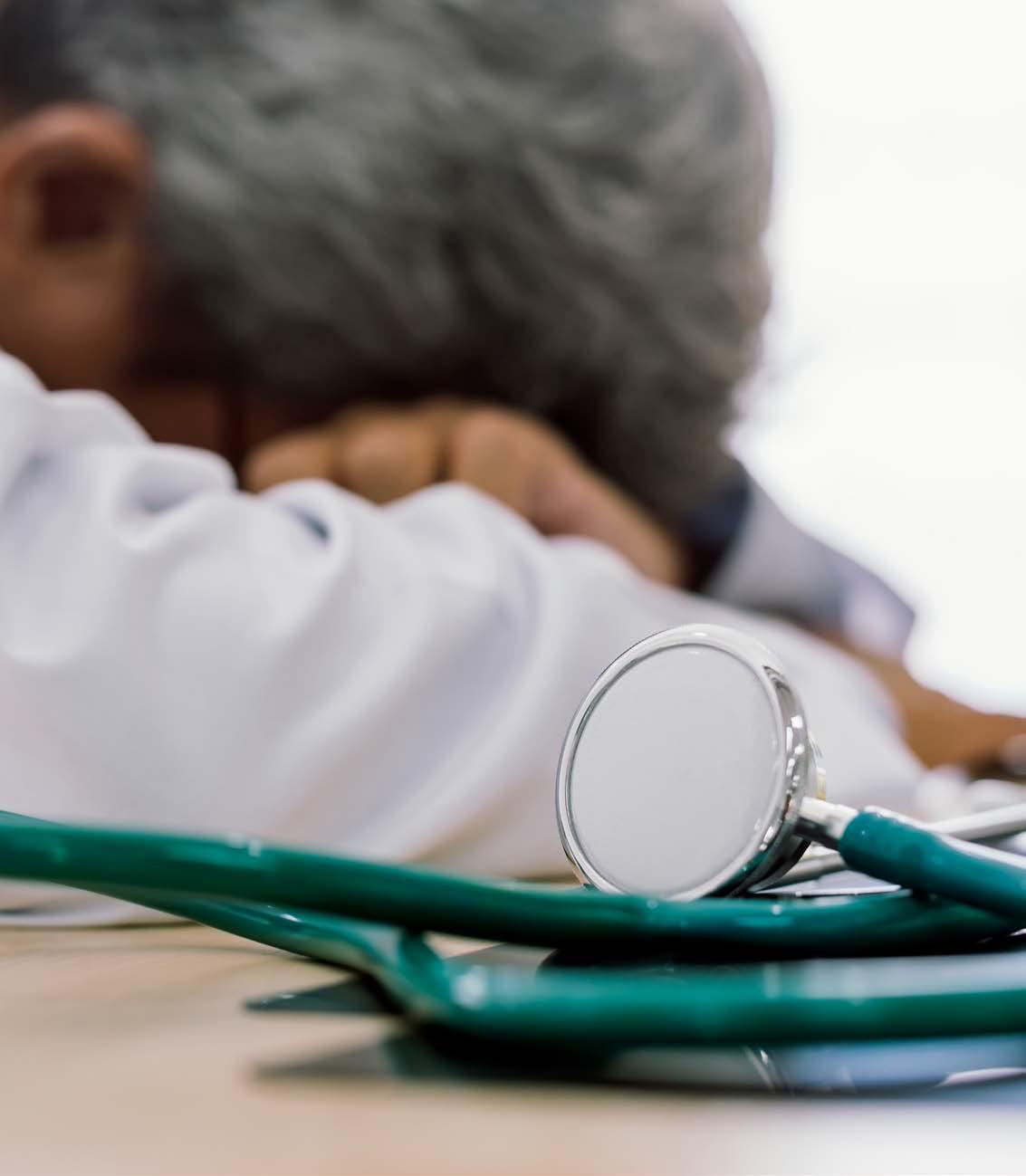
2 minute read
Editor’s Column
from Pennsylvania Psychiatrist, October 2020, Newsletter of the Pennsylvania Psychiatric Society
by TEAM
Second, Do No Harm
by Edward C. Leonard, Jr., MD, DLFAPA
Advertisement
I was taught that physicians are personally responsible for their acts, even when following orders. Therefore, I was startled by an elegantly clever MRI study reporting that the brains of research subjects who were ordered to harm someone showed activity decreases in areas associated with empathy and guilt. The last sentence of this article shocked me: “These results highlight how obeying an order relaxes our aversion against harming others, despite still being the author of the action that led to the pain.”
Does receiving orders decrease psychiatrists’ abilities to control their acts? This study (Obeying Orders Reduces Vicarious Brain Activation Towards Victims’ Pain) increases my concern that the goodness of psychiatrists was not improved by calling physician wrongdoing malfeasance. For countless years non-malfeasance was summarized in the pithy admonition, “First, Do No Harm.” Today, when accused of hurting patients, doctors may claim they were only following employers’ orders, the instructions of their patients’ insurance plans, or the consensus of teams of clinicians.
This article is a preprint scheduled for publication in November’s issue of NeuroImage. It is one in a series of studies co-authored by Emilie Caspar, PhD, a social and cognitive neuroscientist at the Netherlands Institute for Neuroscience in Amsterdam. The institute’s website, provides several interesting videos about their work. Researchers there, led by Christian Keysers, PhD and Valeria Gazzola, PhD, amplified studies that show when humans hurt, their anterior insula and rostral cingulate cortexes become active. Since the same areas activate when witnessing others’ pain, perhaps attempts to prevent harm to others is proportional to the strength of that activation.
Caspar and her co-authors recruited 40 volunteers to form 20 pairs. One was chosen from each pair to be the “agent” inflicting the pain. The partner served as “victim” and was given increasingly strong electric shocks until she experienced pain and a muscle twitched. This setting was then used for all subsequent shocks. Each volunteer was paid a small sum to start work. Then the agent was put into an MRI machine and given a small amount from the victim’s pay for each shock the victim received. The experimenter, who functioned as employer, either told the agent to decide herself whether to shock or commanded the agent to give the shock. Later the victim and agent switched roles. The article’s highlights couldn’t be clearer. “Participants inflict more shocks when obeying orders than when freely deciding. Empathyrelated regions are less active when obeying orders compared to acting freely. Coercion reduced neurocognitive processes associated with guilt. Reduced empathy- and guilt-related activations could facilitate harming under orders.” Do they clearly lead to the conclusion that only those who accept personal ethical responsibility to the patients involved should be allowed to give evaluation and treatment orders to psychiatrists?
At any rate, this study can encourage us to rethink our responsibilities to patients. If Hippocratic physicians knew what happens in our brains when we receive orders, might they have admonished First, Maintain Personal Responsibility for Medical Decisions and Second, Do No Harm?
Everyone interested in how psychiatry got to where it is today must read Susannah Cahalan’s Great Pretender.





